About The Calathea Peacock Plant: Information On How To Grow A Peacock Plant


Peacock houseplants (Calathea makoyana) are often found as part of indoor collections, though some gardeners say they're difficult to grow. Taking care of Calathea peacock and creating conditions in which it will flourish is not difficult when following these simple tips. For information on how to grow a peacock plant, continue reading.
How to Grow a Peacock Plant
High humidity at a level of 60 percent or more is needed for the best performance of the Calathea peacock plant. Many varieties of peacock houseplants offer a range of attractive foliage. No matter the cultivar of peacock houseplants you're growing, providing humidity is the key to optimum performance.
Providing humidity for peacock plant care
Providing humidity for the Calathea peacock plant is as simple as placing bowls of water around the plant. Group peacock houseplants with other humidity-loving plants and the transpiration will offer humidity. A pebble tray located indoors on which plants sit is a good way to provide humidity as well. Frequent misting offers some humidity, but not enough to provide 60 percent in a dry, heated room. Taking care of Calathea peacock can include frequent, lukewarm showers. Use a spray attachment near a sink or actually put them in the shower with other plants that need high humidity. Fashion a humidity tent to use at night, or cover with a cake cover. A humidifier is a good investment when growing peacock houseplants too.
Additional tips for peacock plant care
Start with a healthy plant when learning how to grow a peacock plant. Resist the small nursery plant with browning leaf margins or poor leaf color, as it likely cannot be nursed into a full recovery. Place this plant in a low to moderate light environment. Peacock plant care includes keeping the soil consistently moist. The foliage of the Calathea peacock plant can be damaged by fluoride in water. Collect rainwater for watering peacock houseplants, or use bottled, distilled water without fluoride. Use high nitrogen fertilizer when feeding Calathea peacock plant to avoid pale leaves or brown spots on the leaves. These can also occur when using too much fertilizer high in phosphorus. Leach the soil periodically to remove salts left from fertilization.
Gardening tips, videos, info and more delivered right to your inbox!
Sign up for the Gardening Know How newsletter today and receive a free download of our most popular eBook "How to Grow Delicious Tomatoes."

Becca Badgett was a regular contributor to Gardening Know How for ten years. Co-author of the book How to Grow an EMERGENCY Garden, Becca specializes in succulent and cactus gardening.
-
 Urban Beekeeping Guide: Top Tips For Raising Bees In The City
Urban Beekeeping Guide: Top Tips For Raising Bees In The CityUrban beekeeping can be a rewarding and appreciated pastime, but first be sure it’s legal in your city and learn the ropes of beekeeping.
By Mary Ellen Ellis
-
 2024 Plant Of The Year: Why Experts Say Philodendron Is The “It” Plant Of The Year
2024 Plant Of The Year: Why Experts Say Philodendron Is The “It” Plant Of The YearWe aren’t surprised that philodendron was designated the plant of the year. Versatile, easy-care and lovely, it’s the houseplant of the year 2024!
By Bonnie L. Grant
-
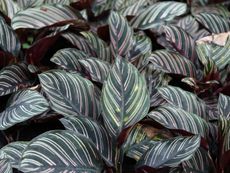 Varieties Of Calathea – Learn About Different Calathea Plants
Varieties Of Calathea – Learn About Different Calathea PlantsThere are many types of Calathea that come in a beautiful array of showy foliage. In fact, there are nearly 300 different cultivars, but only a small number are readily available. Read on to learn about them.
By Raffaele Di Lallo
-
 Winterizing Calatheas: Tips For Calathea Care In Winter
Winterizing Calatheas: Tips For Calathea Care In WinterCalatheas are tropical plants and commonly grown indoors. Click here to learn about winterizing calatheas and their care in winter.
By Mary H. Dyer
-
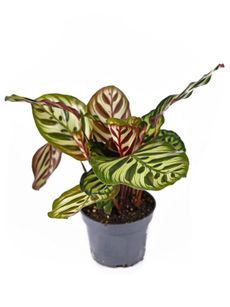 Calathea Propagation Methods: How To Propagate Calathea Plants
Calathea Propagation Methods: How To Propagate Calathea PlantsGrown for its attractive foliage, the calathea is a favorite houseplant. Click here for info on the propagation of calathea plants.
By Becca Badgett
-
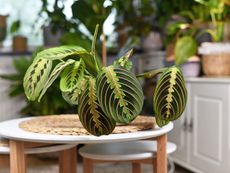 Calathea Vs. Maranta – Are Calathea And Maranta The Same
Calathea Vs. Maranta – Are Calathea And Maranta The SameAre Calathea and Maranta the same? They're closely related and often confused with one another, but are in different genera. Learn more here.
By Bonnie L. Grant
-
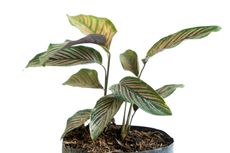 Indoor Pinstripe Plant Info: Growing A Pinstripe Houseplant
Indoor Pinstripe Plant Info: Growing A Pinstripe HouseplantCalathea ornata, or the pinstripe houseplant, is a striking plant with beautifully veined leaves that can make a striking statement in your home. Like any Calathea, houseplant care can be tricky and extra effort is needed for them to look their best indoors. Learn more here.
By Raffaele Di Lallo
-
 Rattlesnake Plant Care: How To Grow Rattlesnake Houseplants
Rattlesnake Plant Care: How To Grow Rattlesnake HouseplantsThe rattlesnake plant is a decorative perennial with strappy, spotted leaves and deep purple undersides. Click to learn more.
By Mary H. Dyer
-
 Calathea Care In Gardens: Tips For Growing Calathea Plants Outside
Calathea Care In Gardens: Tips For Growing Calathea Plants OutsideWill Calathea grow outdoors? It depends on your climate because Calathea is a tropical plant. If you?re fortunate to live in a warm, humid climate in USDA plant hardiness zone 8 or above, you can certainly try growing calathea plants in your garden. Click here for more info.
By Mary H. Dyer
-
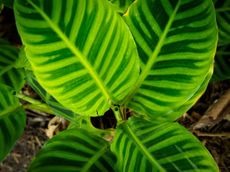 Calathea Zebrina Complete Care And Growing Guide
Calathea Zebrina Complete Care And Growing GuideAttractively exotic, calathea zebrina will add some tropical flair and interest to your houseplant collection.
By Jackie Rhoades